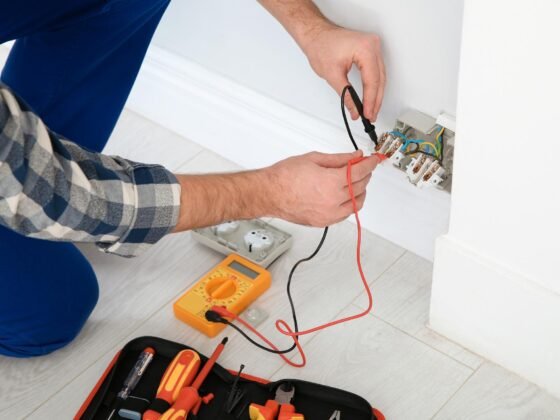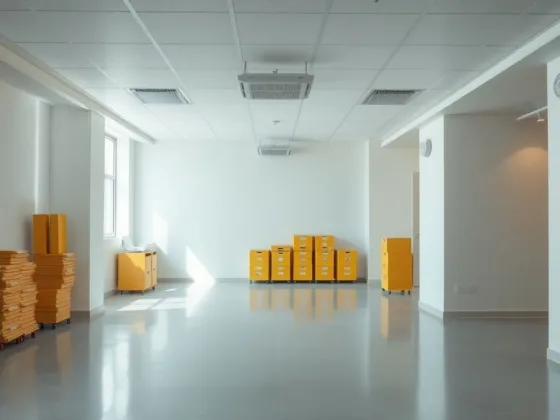Table of Contents Show
Electricity powers the modern world, from homes and businesses to critical infrastructure like hospitals and data centers. The backbone enabling reliable power delivery from generators to end-users is the electrical grid, consisting of complex networks of transmission and distribution lines.
A crucial component is often overlooked but vital within these networks – switchgear. This article explores what switchgear is, why it is an indispensable part of power systems, its evolution and innovations, diverse applications across industries, and the promising future of this technology.
The Significance of Switchgear in Power Systems
Modern civilization critically depends on 24×7 electricity availability via national/regional grids. Our power infrastructure must deliver adequate, uninterrupted supply with exponentially growing energy needs.
This is only possible through intelligent distribution networks with robust switching capabilities. Here are 7 reasons why switchgear is vital in power systems:
- Reroute Power During Equipment Failure or Maintenance – Switchgear allows continuity of supply even if transformers, feeders, etc, need downtime due to disruptions, breakdowns, or routine upkeep. Only switchgear can dynamically reconfigure power flow around obstacles.
- Mitigate Impacts from Short Circuits & Overloads – Unexpected electrical faults can rapidly cascade into disastrous grid failure without intelligent controllers. Switchgear prevents damage by sensing overloads or shorts and cutting power flow via breakers.
- Isolate Faults to Stop Propagation – When part of a distribution system faces trouble, swift isolation through switchgear prevents domino-wide blackouts. This compartmentalization retains healthy uptime despite localized issues.
- Flexibility in Changing Load Distribution – Switchgear facilitates dynamic control over evolving demand and new load additions without disruption. This optimizes power quality for reliability.
- Accommodate Planned Maintenance & Upgrades – Switchyards utilizing switchgear permit planned downtime for infrastructure updates without triggering outages elsewhere. Changeovers are also seamless.
- Safety From Power Surges & Spikes – Switchgear-like cutouts and arrestors dissipate spikes from lightning, switching operations, and faults to safeguard delicate equipment. Their fast response time contains hazardous voltage/current.
- Economize Operations via Automation – Modern computer-aided switchgear removes slow and unsafe manual switching associated with traditional systems. Functions like auto-changeover and self-diagnostics improve efficiency, uptime, and safety.
The Evolution of Switchgear Technology
The early electrical infrastructure simply had uncontrolled connectivity without switchgear. This led to catastrophic blackouts spreading instantly across vast distances whenever any segment encountered trouble. The invention of intelligent, rapidly acting circuit breakers and control switches prevented this.
Switchgear technology has since constantly upgraded from crude mechanical/magnetic designs to modern modular microprocessor-based systems with vacuum or SF6 interruption medium for superior arc quenching. Durability, eco-friendliness, and cybersecurity have also become considerations nowadays.
Many advanced algorithms and digital communication protocols are being incorporated into smart grid-compatible switchgear.
These bridge efficiencies from automated substation duties to intelligent distribution area control right down to smart metering/smart home applications through seamless data sharing across the chain.
Switchgear is evolving beyond just circuit protection equipment to an integrated element that enables sophisticated power distribution strategies through fine-tuned control.
Innovations in Switchgear Design
While still retaining core functionality like overcurrent and fault interruption, switchgear technology has refined existing capabilities and expanded features.
Current innovations aim for smaller footprints, lower environmental impact, better reliability metrics, and smarter remote controllability.
For eco-friendly credentials, switchgear has reduced dependence on greenhouse gases like SF6. Alternatives include clean air, treated air, and gas mixtures using fluoroketones.
Arc interruption advancements like puffer technology and optimal venting geometry also assist noiseless, faster operations.
Switchgear exploits recent advances in electronics, like the Internet of Things (IoT), to augment capabilities beyond hardware. Embedded sensors and connectivity permit intelligent features like predictive maintenance.
Continuously harvesting field data guides proactive upkeep before problems emerge, lengthening durable working lifespans.
The user interface enhancements through digital twin visualization dashboards remotely bring far-flung switchgear networks under fingertip supervision.
This assists situational awareness and data-driven troubleshooting so that even complex, extensive switchyards operate efficiently. Control automation coupled with analytics unlocks superior grid stability.
Applications of Switchgear Across Industries
While extensive in power generation and utility sectors delivering electricity supply security, switchgear also serves numerous key roles across various industries:
Oil & Gas – Handles distribution managing flow, pressure, and integrity monitoring.
Mining – Rugged, flameproof switchgear withstands harsh conditions while optimizing underground power utilizing automation.
Railways: Traction switchgear uniquely supplies extremely high 1500+ DC voltage, ensuring locomotive movement continuity.
Renewables – Grid integration of solar/wind energy depends on switchgear providing stable, synchronized connectivity.
Commercial Buildings– Multi-story skyscrapers integrate granular power monitoring, quality benchmarks, and redundancy through layered switchgear.
Data Centers – The exponential tide of digitalization relies critically on large switchyards guaranteeing 24×7 clean, uninterrupted power with backup to avoid costly data losses.
Marine – Onboard switchgear protects sophisticated distributed propulsion systems across vessels and offshore rigs/platforms against corrosive moisture while handling major loads.
Thus, switchgear constitutes a universal electrical backbone, enabling continuity and protection across key installations where uptime directly translates into performance, productivity, or profitability.
Maintenance and Safety Considerations for Switchgear
Like other capital equipment, routine inspection and preventive maintenance maximize switchgear asset lifespan, reliability metrics, and operational readiness to handle faults. Typical upkeep procedures would include:
- Thermographic scans checking hotspots indicating deterioration
- Sample oil testing assessing insulation quality
- Breaker timing, contact resistance, and synchronization tests ensure correct tripping and reclosure functionality
- Visual verification that components are clean/undamaged
- Functional testing of auxiliary systems like protection relays, alarms, meters, etc
Personnel safety is paramount while handling live switchgear. Strict protocols minimize risks of arc flashes from accidental shorting. Deenergizing equipment, outfitting skilled electrical staff in appropriate PPE, isolation procedures, tools safety, and hazard signage mitigate accidents. Modern remote racking mechanisms inserting/removing breakers avoid direct exposure.
Proper switchgear maintenance & operation training coupled with testing/tagging for compliance ensures uptime while avoiding danger. Safety investments here offset far heavier business disruption/liability impacts from potential incidents.
The Future of Switchgear in Power Distribution
The future of switchgear looks promising, with advancements in technology paving the way for smarter and more efficient power distribution networks:
Integration with Renewable Energy Sources – Seamless meshing with decentralized green energy like rooftop solar depends on intelligent switchgear, enabling grid synchronization, stability, and quality benchmarking. This facilitates a graded transition to sustainability.
Smart Grid Compatibility – Upgrade pathways to emerging dynamic smart power grids rely extensively on modern switchgear underpinning machinable flexibility through sensing/data exchange abilities rather than merely being passive circuit protection equipment.
Eco-Friendly Alternatives to SF6 Gas – While SF6 revolutionized switchgear design through compactness, its greenhouse effects have accelerated innovations eliminating its need. Alternate insulation gases and breakthroughs enabling more efficient SF6 usage target environmental gains.
The Next Frontier of Software-Defined Power – The software revolution expandably transforms grid management on top of digitally connected infrastructure. The future switchgear roadmap leverages IoT, machine learning, and cloud analytics to unlock new vistas like predictive health monitoring and self-healing grids promising extreme resilience.
Conclusion:
As electricity forms the supreme underpinning energy source across modern civilization, ensuring its uninterrupted availability presents a vital challenge with tremendous complexity across far-flung distribution networks. This is only feasible through robust, rapidly responding switchgear forming indispensable control nodes across the grid.
Switchgear innovation has come a long way from primitive fuses and mechanical levers to today’s smart power routing devices, unlocking efficiency, flexibility, and resilience.
With climate consciousness and disruptive technologies nudging the landscape, switchgear continues to gear up further with an environmentally sustainable roadmap promising a bright future powering smarter, self-healing, and distributed green energy networks!










